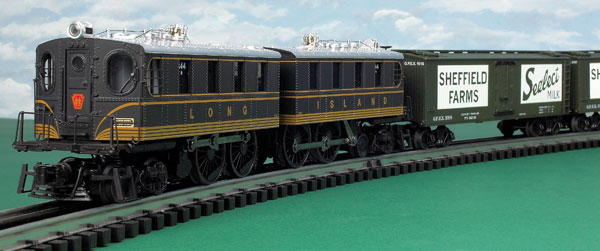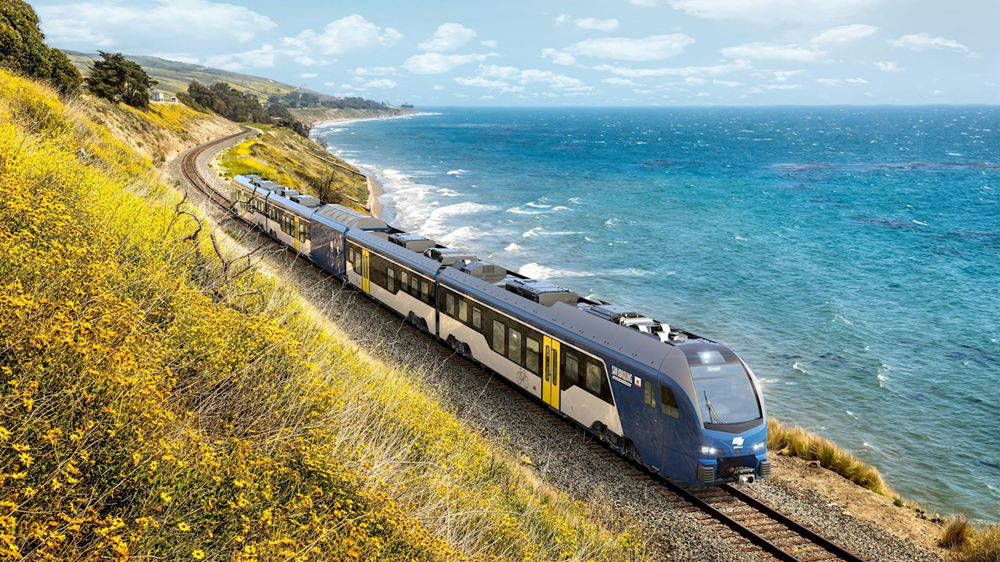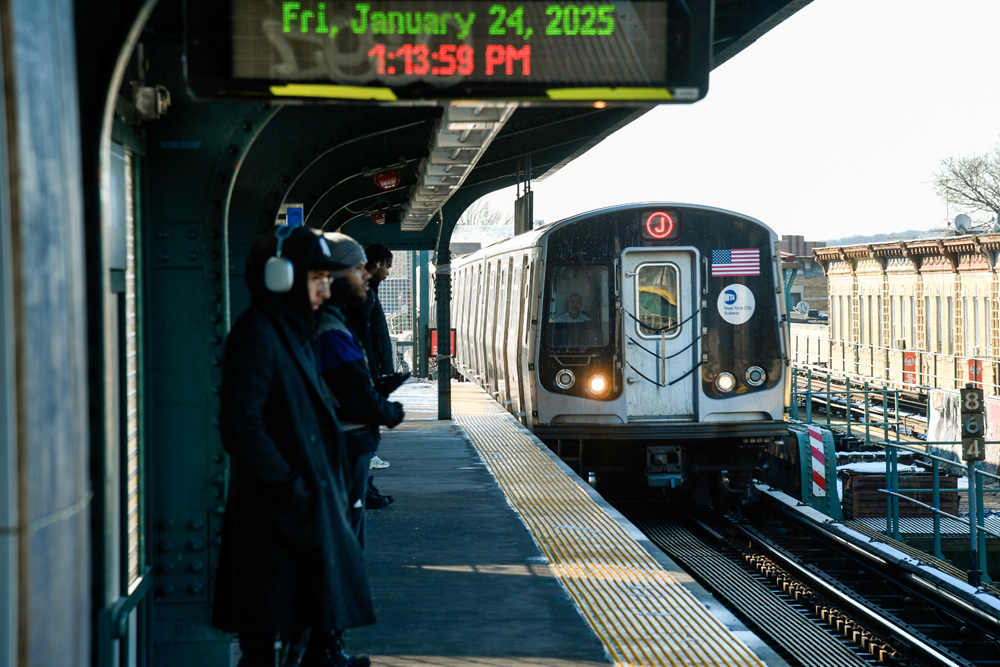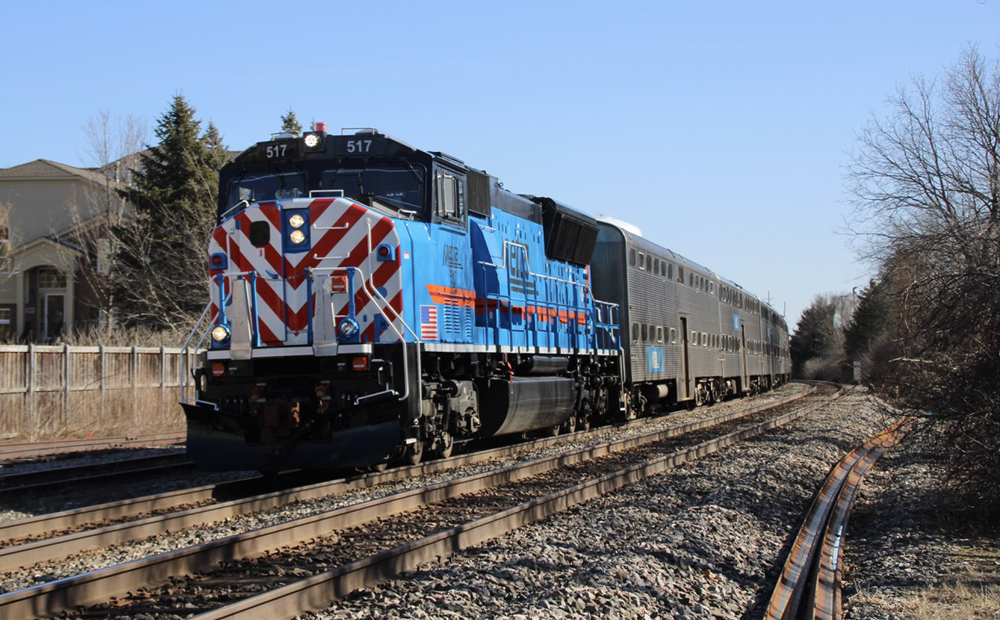Nearly a century after the creation of both the station and the locomotive, it’s an interesting question to ponder.
The DD1 was born of the need for electric locomotives to bring passenger trains in and out of the new underground lines of the Pennsylvania Railroad’s Penn Station. The DD1 was the winning design among several electric locomotives competing to haul heavy passenger trains on the 1.93 percent grade that characterized the Pennsylvania Railroad’s entry into mid-town Manhattan.
In the December 1956 issue of Trains Magazine, Fredrick Westing dubbed the DD1 electric “The locomotive that made Penn Station possible.”
The Pennsy’s shops at Juniata, Pa., built 33 DD-class locomotives from 1909 to 1911. The first regular passenger train left Penn Station behind a DD1 on November 27, 1910.
Every DD1 is a pair of a semi-permanently coupled boxcabs, each with a 2,000-horsepower electric motor that uses side rods to transfer power to 72-inch drive wheels.
The DD-class locomotives delivered superb service for the Pennsylvania. They were powerful, reliable, cost-effective, maneuverable, and speedy. Speedy? DD1 train crews claimed that they reached 90 mph, although only a 60-mph top speed was documented. Either way, not too shabby for a little shoebox.
In the 1920s, the arrival of the L5-class locomotives was expected to make the DD1s obsolete, and the Pennsy began to sell surplus DD1s to its partner Long Island Railroad.
The L5s were not as successful as the railroad had hoped, and the last Pennsylvania DD1 amazingly hung around long enough to see the creation of the Penn Central. It was retired in 1969; the Long Island retired its last DD1 in 1951.
A single DD1 still exists on display at the Pennsylvania Railroad Museum in Strasburg, Pa.
The model
I don’t think that anyone would quibble about the MTH Premier line DD1 being an odd-looking outfit. For the most part, toy trains and boxcabs are strangers. So what does this model of a locomotive built to spend much of its time running beneath Penn Station have to say for itself? Plenty.
While most electric locomotives glide along like a mute diesel, the MTH DD1 is just plain neat to watch! Whether chugging slowly or blazing down a pike with its throttle wide open, the movement of the big side rods and counterweights is unexpected and captivating.
When I was taping a video of this locomotive for Classic Toy Trains’ website, I came to the conclusion that if the Land of Oz had a railroad, it certainly would have used DD1s. They are squarish, blunt, and odd-looking, but run like the blazes and pull a ton.
You’ll note no pantographs on this die-cast metal locomotive. It was designed to operate subway style, on an outside third rail, and the pickup shoes are nicely simulated on the trucks.
When our DD1 ran in dim light, the cab illumination really stood out. The figure of the engineer/motorman looked lonely through the cab window.
Decoration is worth mentioning, since upon first glance most of the staff thought this was the Pennsylvania version. The roof is painted silver, and the body is painted Pennsy’s Brunswick green with multiple gold stripes. Of course, the Long Island’s “LI” is placed in the middle of a red Pennsy keystone. The paint scheme is dignified and not flashy. You’ll find the locomotive number (“344 A and B”) on the sides of the headlights as well as on a window, just behind the engineer/motorman.
Lest I forget the rolling stock that comes with this locomotive set – four die-cast metal Sheffield Farms wood-sided refrigerator cars. The milk cars, modeled after those used on the Long Island RR, are heavy and have a good degree of cast-in wood grain texture. For cars weighing 2 pounds each, they are surprisingly free-rolling.
On the test track
The DD1 did a great job. In conventional-control mode, the locomotive’s low-speed average was 6.65 scale mph and the high-speed average was 81.03 scale mph. Drawbar pull for the locomotive was 2 pounds, 8 ounces on tubular track.
Operating in DCS mode, our boxcab had a low-speed average of 2.76 scale mph.
In spite of its relatively small size, this little outfit can haul a freight train lickety-split. We timed it with a 20-plus car train of mixed make and vintage rolling stock at 77.8 scale mph in conventional-control mode with 18 volts on the track. On the downside, I noted that it balked at running over some track switches at its lowest speed.
When researching this locomotive I found a “shell off” photo of the prototype, shown above.
It looks like MTH’s model is more sophisticated than the real thing, though the prototype probably didn’t need a speaker for a sound system!
As regular CTT readers will recall, I’m no fan of electric locomotive sound systems. To me they’re not much better than white noise. So with that bias in mind, I’ll just say the DD1 sounds were satisfactory.
The locomotive uses a whistle and not a horn (remember, the prototype predates World War I), and there is a buzz that reminds me of the transformer at my elementary school’s playground.
All command-control functions, like the coil couplers worked as advertised. Additional audio chatter accessible in DCS mode was first rate.
Although the DD1 is actually comprised of a pair of boxcabs, the MTH models cannot be run individually in either conventional or command-control modes. The electronics are divided between the two units and connected by an electrical tether.
The MTH DD1 is a refreshing change of pace from many of the larger electrics offered in O gauge over the years. It has an uncommon design that gives it personality, yet it has enough pulling power to make it the rival of more conventional-looking locomotives in your fleet.















The DD1 that I have stopped running smoothly after only 10hours of use, due in part to the electrical connection between the to units. I beleive that the B units connection is at fault but sent it to a repair station to get a better idea of the problem. The sound and engines were working great up until then. Now the set that I bought was at a train show off a vender and it does not have the electrical cable arms that are pictured in the 05 catalog of MTH but looks just like the one in your mag.